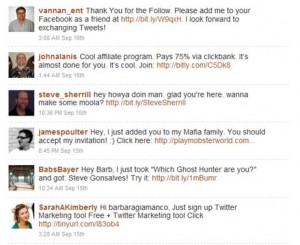The explosion of social media into mainstream consciousness has seemingly come from nowhere. Though it may be new to you, the social media groundswell has been building for some time, and it’s fair to say that the buzz right now is deafening.
While there is a growing familiarity with tools like LinkedIn, Facebook, Twitter, blogs and YouTube, here are 5 questions being asked in companies large and small about the business reasons for using social media:
1. Why should we care?
2. Where do we start?
3. What technology should we be using?
4. How do we manage the information?
5. How will we measure effectiveness?
As with any new business undertaking, questions like these (and more) definitely need to be answered. Here are the reasons that I believe it is important to pay attention.
Why You Should Care
These days your prospects are surfing the net, reading blogs, participating in forums and group discussions, asking for product and services referrals from their social networks and joining on-line communities.
Even if you wanted to “opt out”, choosing instead to use outdated approaches to sales and marketing, your potential customers - and your savvy competitors - are most definitely going to be online.
Your prospects are tuned in to what they want, what’s available, where to purchase and how much to spend. The bigger the sale, the more educated they will be.
With 66% of the 38 million LinkedIn users deemed “key decision maker”,175+ million people on Facebook (31% over the age of 35), and millions more conversing over Twitter, you can’t ignore the opportunity. The name of the game then is visibility. If you aren’t participating online, you are missing huge opportunities to reach an audience you would otherwise not be able to connect with in an easy and cost effective way.
How to Get Started
If you are just getting your feet wet with regard to social media, you are most likely approaching it backwards, as most do. Companies are typically approaching the social computing world by looking first at the nifty, whiz bang technologies available. Could be a tweet here, a blog there, a LinkedIn profile, a Facebook fan page or a few YouTube video’s thrown up on the website- to achieve their sales and marketing goal. That is a mistake! People, purpose and plan first - technology last -should be the mantra of every business interested in succeeding with social media.
Technology
As with any hot trend, people are clamoring to get on board the social media gravy train. Yet as many have already discovered, having an online profile doesn’t mean you are using social media effectively to market your business or increase your sales. People are floundering in the online space for many of the same reasons they probably flounder around with their current sales and networking approach. They don’t have a plan!
Your plan starts with “narrowing” and “clearly defining” your target audience. Here’s a hint…your audience is NOT everyone with a pulse. Though it seems counterintuitive to some, the more you narrow your market, the faster you gain traction, which then leads to more sales of your products and services.
The key with choosing the right technology is making sure you know EXACTLY what results you want to achieve. You certainly need to understand what tools are available, but that’s the last thing you really need to focus your attention on. Once you know who your audience is, where they live online and what you want to happen once you get in front of them, you are then well positioned to use an online tool best suited for your purpose.
Managing the Flow
I’m known for saying that it is up to “you” to manage technology, not the other way around. Dashboard tools like Digsby help you watch your email, Facebook page, Twitter account, LinkedIn profile and more without having to web surf the individual sites. TweetDeck gives you the ability to keep on top of all that is happening in your Twitter world. And tools like Ping and HelloText let you create a post once that updates multiple sites of your choosing all at the same time. The point is that you shouldn’t let the “fear” of too much information stop you from getting on board. There are lots of great tools to help with the information management flow.
Measuring the ROI
Like anything else in business, you need to be sure that you are measuring effectiveness and results to ensure that you get the greatest return on your effort. In the March 23rd edition of Information Week, TransUnion reported as estimated $2.5 million in savings in less than five months. Did I mention that you first need a plan? In TransUnion’s case, their cost savings showed up in a reduction of software services purchases. Using an internal social networking platform, employees were able to brainstorm ways to more effectively utilize what they already had, thus reducing the need to buy more.
Companies of all sizes will benefit from having clearly defined objectives that you can then track your progress against. If one of your goals is to increase product sales on your website, you will want to track HOW people find you. Was it the blog, Twitter, LinkedIn, a Facebook ad, or that amazing sales article your sales manager just wrote? You can use tools like Google Analytics to help you track how many visitors visit your website, as well as give you clues as to what they focused on they got there.
Summary
Remember that social media and the world of social networking are here to stay. See it as a threat or an opportunity. It’s your choice!

